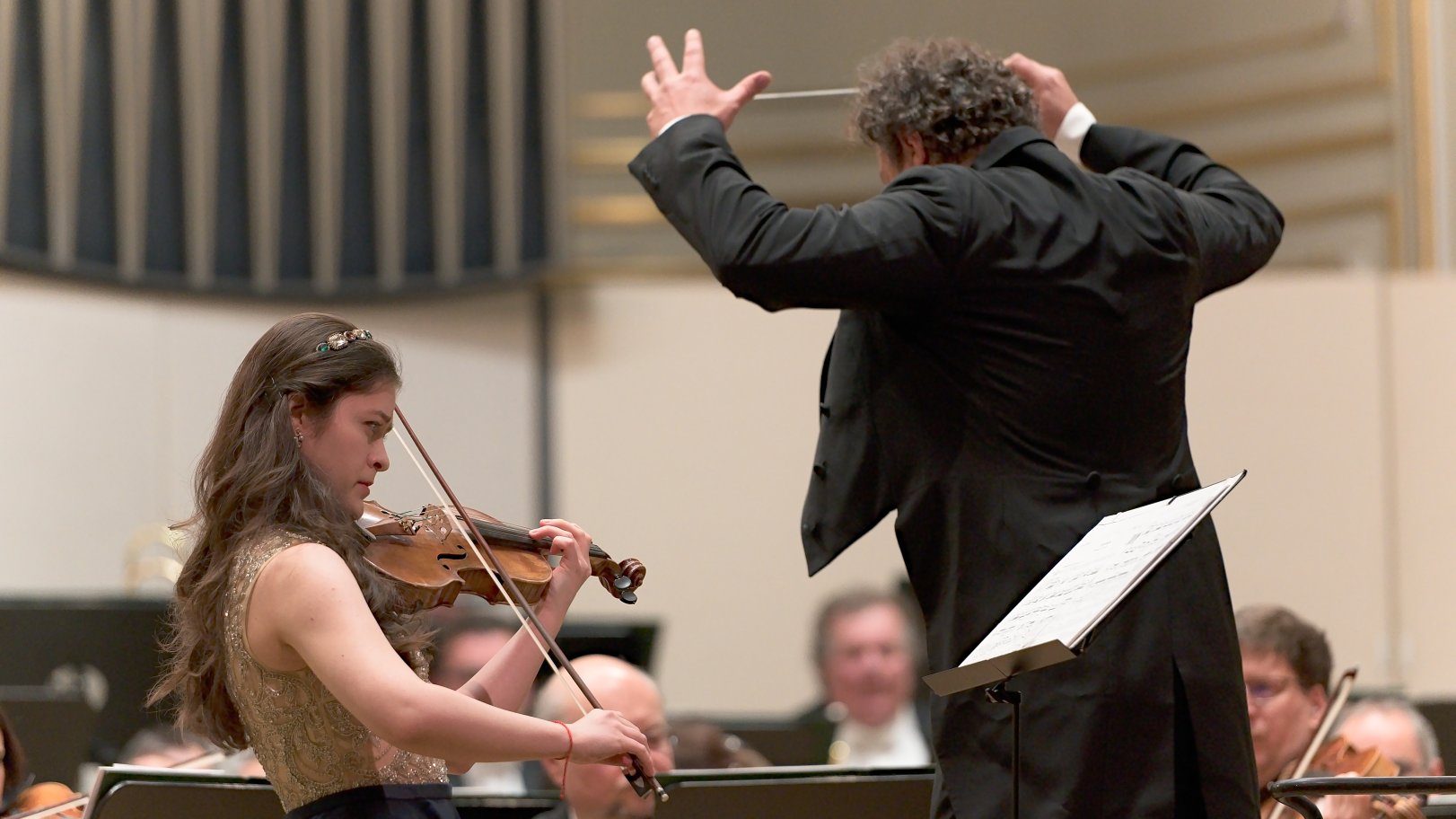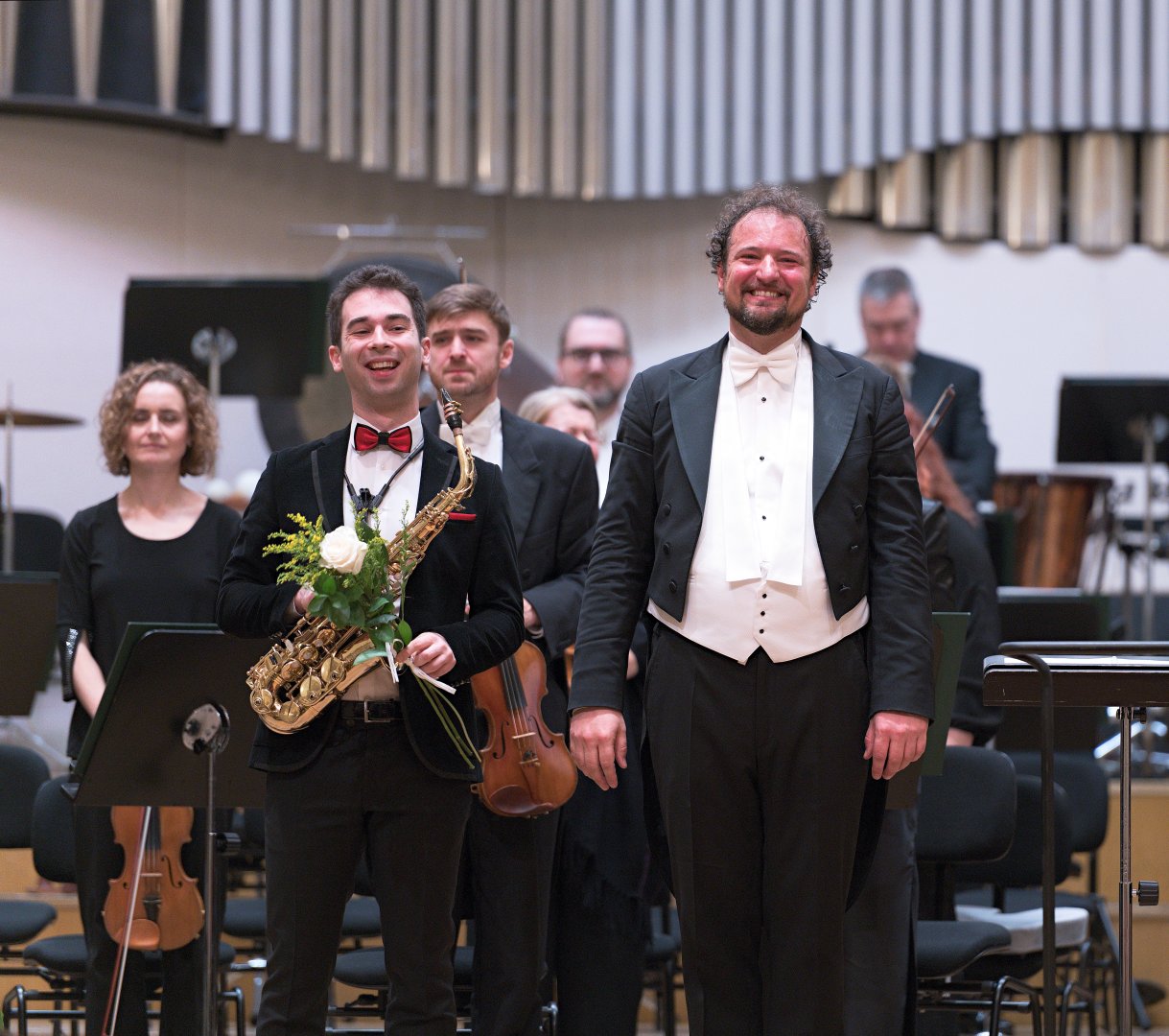Though I generally rave in glorious terms about Budapest’s musical bounty, one of the most fascinating classical music programs I’ve heard in many years took place in Bratislava on 3 March. The quality was top-notch and the programming was by far more interesting than the average symphonic fare. Boosting the degree of surprise for me was that the four excellent soloists were local conservatory students.
The Slovak Philharmonic, under the direction of Maestro Peter Valentovic, presented complex, lesser-known works by 20th-century composers Jacques Ibert, Paul Creston, the Slovak composer Eugen Suchon, and ending with a Maurice Ravel favorite. The program began with the premiere of a work by a young Slovak composer, Martin Lang (born 1996). His “Ultima Ritualia,” was the first salvo for these novel symphonic experiences.
And novel is the right word, and congruent with the performances by violinist Anabela Patkoló, alto saxophonist Andrej Simancuk, marimbist Martin Zajac, and pianist Nika Sidor. These students were chosen by audition from two conservatories: the Academy of Arts in Banská Bystrica, and the University of Performing Arts in Bratislava. If I had been blindfolded, I would not have detected that these four were already not working professionals. Bravos to their teachers and to the students’ undoubtedly endless hours of toil in the practice rooms.
Lang, freshly graduated from the University of Performing Arts, has written a work whose theme might be considered odd, considering his age: the subject of death. Not in a morose way, but a view that paints various approaches from different cultures’ responses to death. His program notes acknowledge the “Danse Macabre,” the grotesque embodiment of the medieval ‘momento mori,’ visions of the Grim Reaper, and the Black Death plague – echoes of what the world has been experiencing these past two years.

“Ultima Ritualia” employs the percussion section with gusto: drums of all kinds punctuate the opening funeral march that leads to a brass choir announcing the approaching cataclysm. Silken strings intervene with moments of absolution before the drumbeats of the death march reappear. Lang’s rich orchestration, with a mix of horror and humor, lets us consider the brighter side of mortality with vivid sonic colors.
Patkolo’s shimmering account of Suchon’s “Fantazia” for violin and orchestra thoughtfully portrayed the composer’s intensely poetic piece which is reminiscent of early 20th century French styles. The enormously gifted Simancuk shined throughout Ibert’s exhilarating ‘Concerto da camera’ for alto sax and orchestra, exhibiting extraordinary technical prowess. Zajac, on his gigantic redwood marimba placed front and center, awed the audience with Creston’s jazzy and virtuosic ‘Concertino’ for marimba and orchestra. Its modernist compositional style echoes a bit of Bernstein’s flair and syncopated energy. Pianist Sidor tackled the kaleidoscopic Ravel Concerto in G with precision and clarity in the score’s dizzying mood changes from a saturnine waltz to the finale’s high-speed circus.

Conductor Valentovic is a highly valued and versatile maestro in both the symphonic and operatic realms. A long-time accompanist and touring partner of the renown soprano Edita Guberova, he has conducted at the Hungarian State Opera, Deutsche Oper Berlin, Staatsoper Berlin, Istanbul State Opera, Cape Town Opera, and Theatre an der Wien, as well as the Wiener Konzerthaus, Tonhalle Zürich, the Slovak Radio Symphony and the Slovak Philharmonic, and now serves as chief conductor at the Opera Company of Kosice (Kassa) in addition to many other symphonic appearances around the world.
This remarkable evening was Valentovic’s debut conducting the above-mentioned scores (excepting the Ravel), and on short notice. This revealed him to be a dynamic master of the moment, not only guiding the 70-member orchestra in its collective premiere of these pieces, but invigorating the main-stage debuts of the extraordinarily accomplished students as well.











